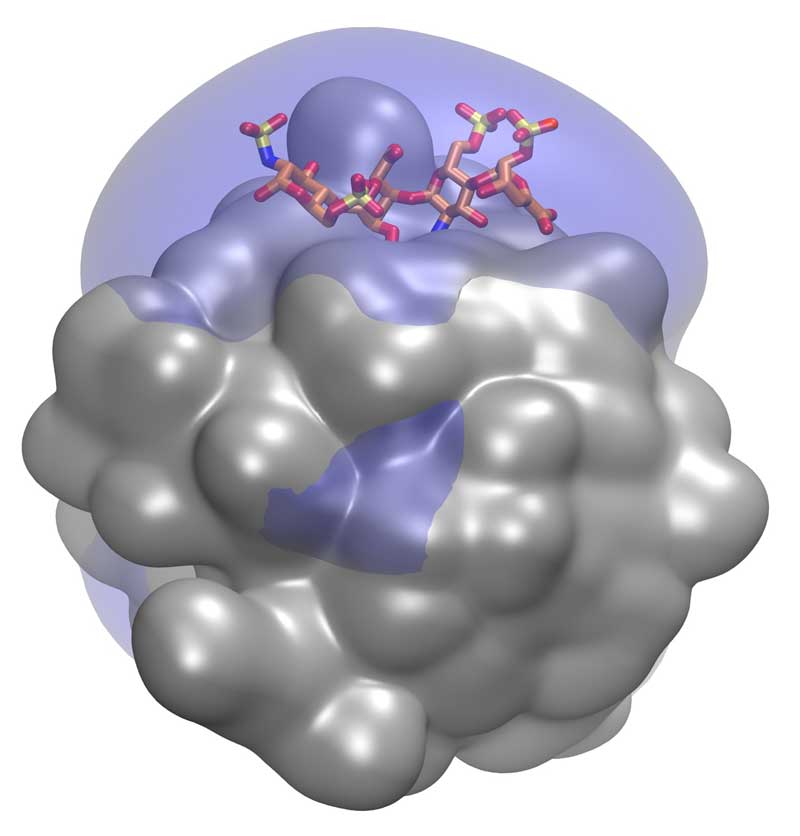M. Teresa Pisabarro Group
Computational approaches to functional genomics and rational engineering for target/drug discovery and biotechnology innovation
1. Integrative bioinformatics for functional annotation of uncharacterized proteins and target discovery
We develop computational structure-based approaches to predict and/or confirm structural features of non-characterized proteins. We build detailed 3D atomic models of the uncharacterized proteins and their complexes to derive hypotheses that, in close collaboration with the experimentalists, help to predict and understand their function and networks.
We also combine fold recognition approaches and 3D functional descriptors of proteins for genome-wide discovery of remote homologues members of different structural protein families (e.g. chemokines). We are particularly interested in the identification of novel human proteins involved in inflammatory, immune and cancer processes that cannot be characterized by sequence -based methods due to their low or not existing sequence similarity to others.
2. Detailed characterization of interfacial solvent and implications for rational engineering
An accurate description of protein interfaces is needed in order to properly characterize protein function and rationally interfere with it. We develop computational tools to investigate protein and solvent interactions in an automatic and comparative fashion. We are interested on including solvent to qualitatively improve the accuracy of folding, docking and rational design methods.
3. Rational engineering and de novo design for biotechnological and/or medical applications
Rational engineering of enzymes with improved anti-HIV properties: We collaborate with experimental groups (Prof. Buchholz, TUD) in the generation of new DNA recombinases with improved properties to excise HIV from infected human cells. We use computational approaches to rationalize the molecular recognition of these enzymes with the aim of establishing the bases for their structure-function relationships and to be able to rationally design evolved DNA recombinases with the desired properties of stability and specificity for different DNA sequences.
De novo rational design of molecular scaffolds mimicking protein interactions for specific interference in cell signaling processes: We apply molecular modelling and computer simulation techniques for designing molecules with pharmacological/biotechnological interest. On one hand, we make use of scaffolds that are available in nature and rationally modify them in order to improve their properties in terms of stability, affinity and specificity. On the other hand, we de novo design scaffolds that mimic natural protein 3D templates involved in interactions of pharmacological relevance.
Rational engineering of biomaterials for tissue regeneration: In close collaboration with experimentalists, we work on the characterization of the structural requirements for protein-GAG binding. GAG (glycosaminoglycans) are common constituents of cell surfaces and extracellular matrices, and their interactions with a wide variety of molecules such as growth factors and cytokines play a prominent role in basic biological phenomena like cell adhesion, migration, proliferation and differentiation. Thanks to these biocharacteristics, attachment of GAGs to biomaterials offers a great opportunity to modulate tissue response and create an appropriate environment for cellular signalling, both important issues in tissue engineering and regeneration. We apply computational modelling and simulation techniques to understand the hetereogeneity of the GAG component and to study structural and physical characteristics of GAGs in the context of their interaction with their biological binding-partners. Our studies help in the design of biomaterials to promote bio-specific cell behavior (funded by the German Research Council SFB-TRR 67).
Future Projects and Goals
Our current research focuses on the discovery and functional characterization of novel proteins, the rational engineering of proteins with improved functional properties, and de novo design of molecular scaffolds for a variety of biotechnological and biomedical applications. We apply structure-based computational methods, molecular modelling and simulation techniques to decipher the relationships between protein structure and function in order to understand the molecular basis of protein-protein, protein-DNA and protein-sugar recognition, which will allow us to unravel protein function and to rationally intervene it.
Methodological and Technical Expertise
- Molecular modelling
- molecular mechanics and dynamics
- docking
- fold recognition
- de novo design
